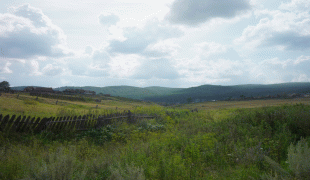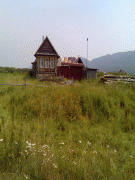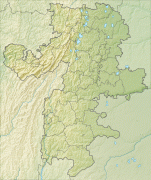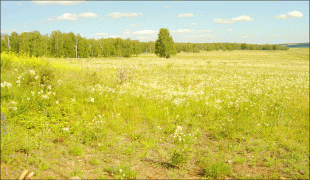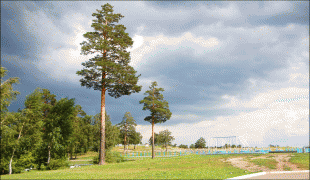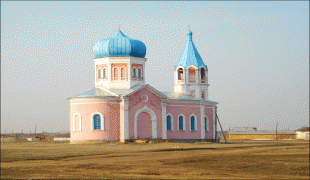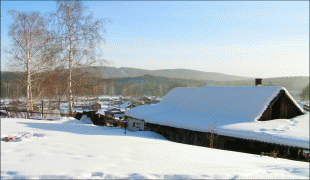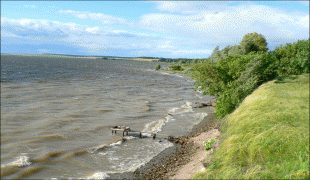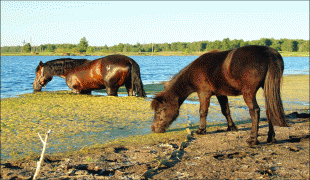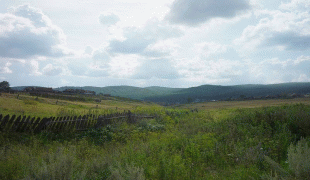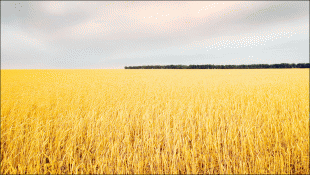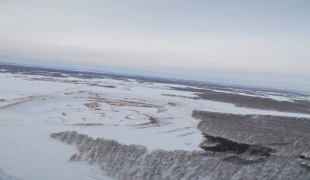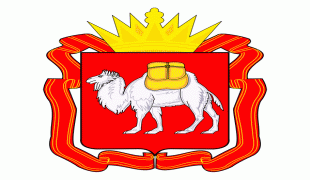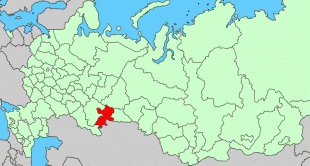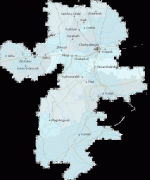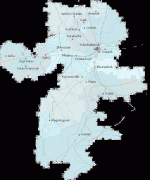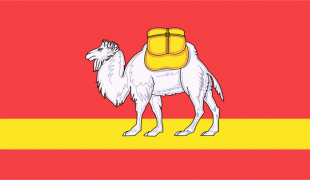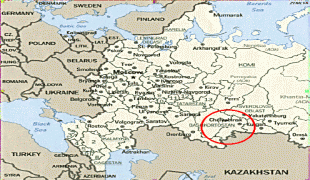Chelyabinsk Oblast (Chelyabinsk Oblast)
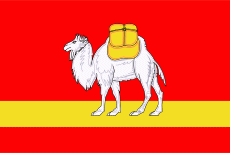 |
 |
During the Middle Ages, Bashkir tribes inhabited the Southern Urals; they formed part of the Golden Horde, Nogai Horde, and smaller Bashkir unions. The Tsardom of Russia incorporated the area in the late 16th century. However, Russian colonization of the region only began in the 18th century, with the establishment of a system of fortresses and trade posts on the then-Russian border by the Orenburg Expedition in 1734. Many cities of Chelyabinsk Oblast, including the city of Chelyabinsk itself, trace their history back to those forts.
In 1743 the Chelyabinsk fortress became a center of the Iset Province, a constituent part of the Orenburg Governorate (a direct successor of the Orenburg Expedition). The period from the 1750s to the 1770s saw the emergence of industrial enterprises in the Southern Urals when the first factory-centered towns like Miass, Kyshtym, and Zlatoust were founded. After the Southern Urals recovered from the Pugachev's Rebellion of 1773–1775, the territory of modern-day Chelyabinsk Oblast started to attract more people from the European part of Russia. By the mid-19th century Chelyabinsk was a major trade center in the Urals, and after the construction of the Trans-Siberian Railway in the 1890s, it became an important transport hub that connected Siberia to the rest of the Russian Empire.
In 1919, Chelyabinsk became the regional capital of the newly formed Chelyabinsk Governorate of the Russian SFSR, which combined eastern portions of the Orenburg Governorate with Kurgan of the Tobolsk Governorate. At this time, the population of the new region has already exceeded one million people. In 1923, together with the Perm, Yekaterinburg Governorate and Tyumen governorates, it merged into a single Ural Oblast that lasted only ten years, until 1934. On January 17, 1934, Chelyabinsk Oblast was finally established. Its current boundaries were formed when Kurgan Oblast was detached from it in 1943.
Map - Chelyabinsk Oblast (Chelyabinsk Oblast)
Map
Country - Russia
 |
 |
| Flag of Russia | |
The East Slavs emerged as a recognisable group in Europe between the 3rd and 8th centuries CE. The first East Slavic state, Kievan Rus', arose in the 9th century, and in 988, it adopted Orthodox Christianity from the Byzantine Empire. Rus' ultimately disintegrated, with the Grand Duchy of Moscow growing to become the Tsardom of Russia. By the early 18th century, Russia had vastly expanded through conquest, annexation, and the efforts of Russian explorers, developing into the Russian Empire, which remains the third-largest empire in history. However, with the Russian Revolution in 1917, Russia's monarchic rule was abolished and replaced by the Russian SFSR—the world's first constitutionally socialist state. Following the Russian Civil War, the Russian SFSR established the Soviet Union (with three other Soviet republics), within which it was the largest and principal constituent. At the expense of millions of lives, the Soviet Union underwent rapid industrialization in the 1930s, and later played a decisive role for the Allies of World War II by leading large-scale efforts on the Eastern Front. With the onset of the Cold War, it competed with the United States for global ideological influence; the Soviet era of the 20th century saw some of the most significant Russian technological achievements, including the first human-made satellite and the first human expedition into outer space.
Currency / Language
| ISO | Currency | Symbol | Significant figures |
|---|---|---|---|
| RUB | Russian ruble | ₽ | 2 |
| ISO | Language |
|---|---|
| CE | Chechen language |
| CV | Chuvash language |
| KV | Komi language |
| RU | Russian language |
| TT | Tatar language |







